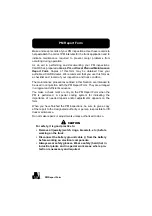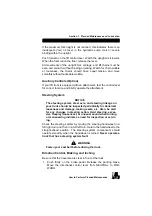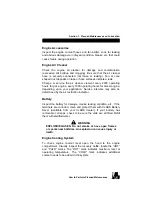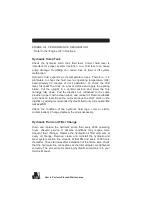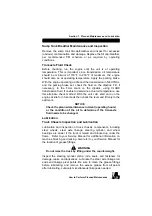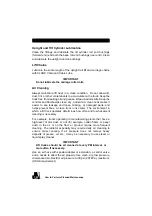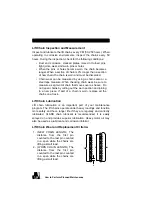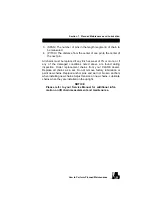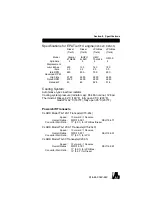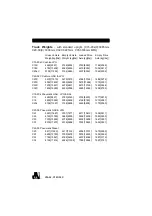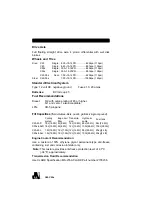
How to Perform Planned Maintenance
7-25
Section 7. Planned Maintenance and Lubrication
Sump Tank Breather Maintenance and Inspection
Remove the sump tank fill cap/breather and inspect for excessive
(obvious) contamination and damage. Replace the fill cap/breather,
per recommended PM schedule or as required by operating
conditions.
Transaxle Fluid Check
Before checking, run the engine until the unit is at operating
temperature. This is important since transmission oil temperature
should be minimum of 150°F to 250°F of maximum, the engine
should also be at operating temperature. Apply the parking brake.
With the engine operating at idle and the transmission in NEUTRAL,
and the parking brake set, check the fluid on the dipstick. Fill, if
necessary, to the FULL mark on the dipstick, using CLARK
transmission fluid. If unable to determine actual oil temperature, use
this alternate check method: With the unit cold, start and run the
engine at idle for 30 seconds then check the level and fill only to the
add mark.
NOTICE
Check the planned maintenance interval (operating hours)
or the condition of the oil to determine if the transaxle
fluid needs to be changed.
Lubrication
Truck Chassis Inspection and Lubrication
Lubrication and inspection of truck chassis components, including
steer wheels, steer axle linkage, steering cylinder, and wheel
bearings are easier if the truck is raised and blocked up under the
frame. Refer to your Service Manual for additional information on
machine blocking and jacking. Also refer to your Service Manual for
the location of grease fittings.
WARNING
!
Do not raise the truck by lifting under the counterweight.
Inspect the steering cylinder piston rods, seals, and fasteners for
damage, leaks, and looseness. Lubricate the steer axle linkage rod
ends and linkage pivot points. Be sure to clean the grease fittings
before lubricating, and remove the excess grease from all points
after lubricating. Lubricate miscellaneous linkage as needed.
Summary of Contents for C15 D
Page 2: ......
Page 6: ...iv...
Page 16: ...1 4 Seat Belts Seat Belts ALWAYS BUCKLE UP Seat belts can reduce injuries...
Page 30: ......
Page 88: ...5 8...
Page 107: ...PM Report Form 7 13 Section 7 Planned Maintenance and Lubrication...
Page 124: ...7 30...
Page 142: ......
Page 143: ......


